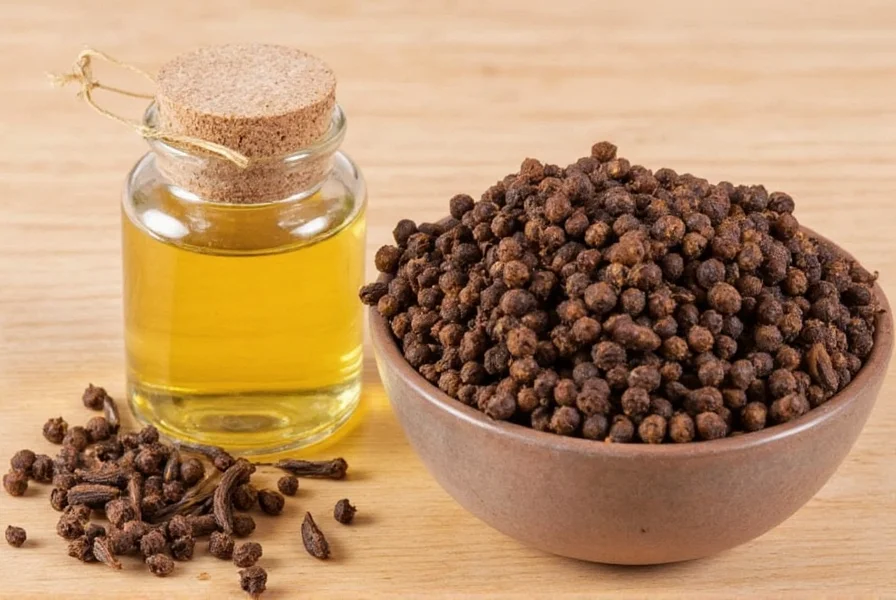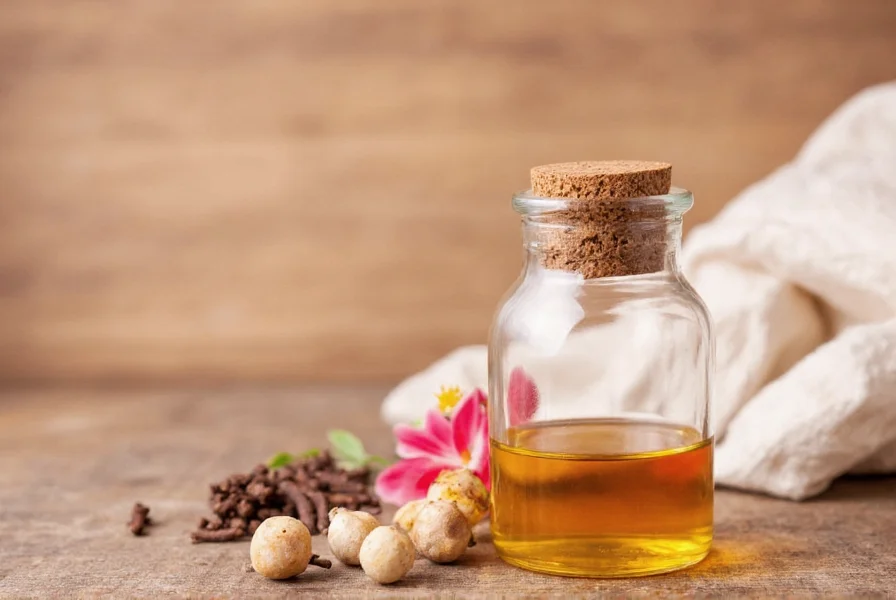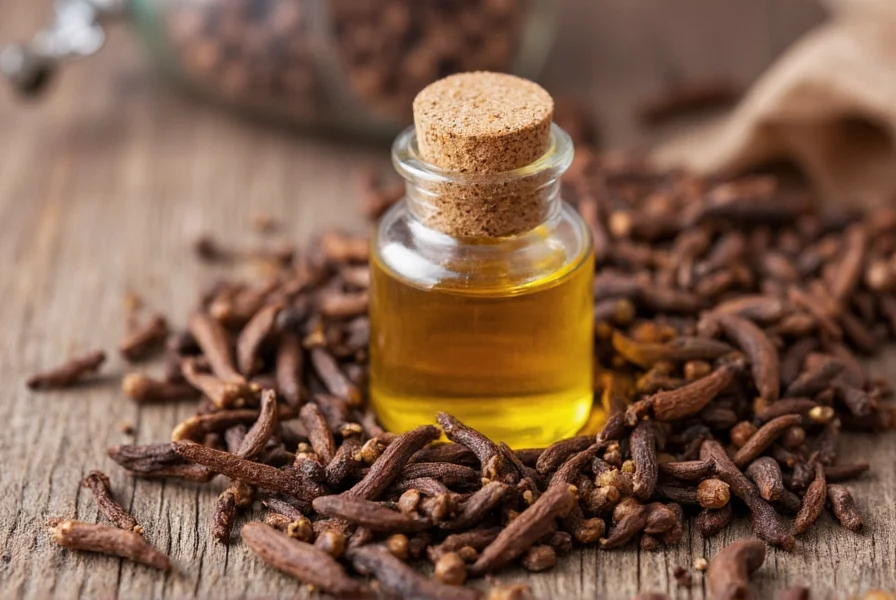Making clove oil at home provides an affordable, natural alternative to store-bought versions while allowing you to control the quality of ingredients. Clove oil contains eugenol, a compound with well-documented antimicrobial and analgesic properties that makes it valuable for dental care, minor wound treatment, and as a natural remedy for various discomforts.
Why Make Your Own Clove Oil
Commercial clove oil often contains additives or is diluted with other oils. When you make clove oil at home using proper techniques, you ensure purity and potency while avoiding unnecessary chemicals. Homemade clove oil typically costs significantly less than high-quality store-bought versions, making it an economical choice for regular users.
Safety First: Important Precautions
Clove oil is potent and must be handled carefully. Always dilute before skin application (typically 1-2 drops per teaspoon of carrier oil). Never apply undiluted clove oil directly to skin or gums as it can cause burns or irritation. Keep away from children and pets. If you have sensitive skin, perform a patch test before wider use. Consult your healthcare provider before using clove oil if you take blood thinners or have bleeding disorders, as eugenol may increase bleeding risk.
| Method | Time Required | Oil Quality | Best For |
|---|---|---|---|
| Cold Infusion | 2-3 weeks | Highest quality, preserves compounds | Therapeutic use, long-term storage |
| Heat Infusion | 2-4 hours | Good quality, some compound loss | Immediate needs, beginners |
| Solar Infusion | 3-5 days | Moderate quality | Warm climates, passive method |
Materials You'll Need
- 1 cup high-quality carrier oil (olive, coconut, or almond oil)
- 1/2 cup whole dried cloves (not ground)
- Glass mason jar with tight-sealing lid
- Fine mesh strainer or cheesecloth
- Amber glass dropper bottles for storage
- Small funnel
- Labeling materials

Step-by-Step Cold Infusion Method
The cold infusion method produces the highest quality clove oil with maximum preservation of beneficial compounds. This technique requires patience but delivers superior results compared to faster methods.
- Thoroughly clean and dry a glass jar (8-16 oz capacity)
- Add 1/2 cup of whole dried cloves to the jar
- Pour 1 cup of carrier oil over the cloves, ensuring they're completely submerged
- Seal the jar tightly and shake gently for 30 seconds
- Store in a cool, dark place away from direct sunlight
- Shake the jar gently once daily for 14-21 days
- Strain through cheesecloth into a clean container, squeezing to extract all oil
- Transfer to amber glass bottles and label with date
Heat Infusion Method (Faster Alternative)
When you need clove oil more quickly, the heat infusion method works in just a few hours. While slightly less potent than cold infusion, this approach still produces effective oil.
- Combine 1 cup carrier oil and 1/2 cup whole cloves in a double boiler
- Heat on lowest setting for 2-4 hours (never exceed 140°F/60°C)
- Stir occasionally to prevent scorching
- Remove from heat and let cool completely
- Strain through multiple layers of cheesecloth
- Store in amber glass bottles away from light

Proper Storage Techniques
Correct storage determines how long your homemade clove oil remains effective. Always use amber or cobalt blue glass bottles to protect from light degradation. Store in a cool, dark place with temperatures between 50-70°F (10-21°C). Properly stored, homemade clove oil maintains potency for 6-12 months. Label each bottle with the preparation date and check for signs of spoilage before each use.
Safe Usage Guidelines
Never use undiluted clove oil directly on skin or mucous membranes. For topical applications, use a 1-2% dilution (1-2 drops per teaspoon of carrier oil). For dental applications, dilute further (1 drop per tablespoon of carrier oil). Limit use to 7-10 days consecutively unless directed by a healthcare professional. Discontinue use if you experience redness, burning, or irritation. Clove oil is not recommended for children under 2 years old.
Common Applications and Dilution Ratios
- Toothache relief: 1 drop clove oil + 1 teaspoon carrier oil (apply with cotton swab)
- Skin antiseptic: 2 drops clove oil + 1 tablespoon carrier oil
- Minor wound care: 1 drop clove oil + 2 tablespoons carrier oil
- Household cleaner: 10 drops clove oil + 1 cup water + 1 cup vinegar
- Aromatherapy: 3-5 drops in diffuser with water (never ingest)
Troubleshooting Common Issues
Cloudy oil: Indicates moisture contamination - discard and restart with completely dry ingredients.
Weak scent: Steep longer (up to 4 weeks) or use more cloves in your next batch.
Mold growth: Discard immediately - this means moisture got into your mixture.
Rancid smell: Oil has spoiled - proper storage in dark glass containers prevents this.
Understanding Shelf Life and Potency
Homemade clove oil gradually loses potency over time. The eugenol content, responsible for most therapeutic benefits, degrades slowly when properly stored. For maximum effectiveness in therapeutic applications, use within 6 months. After 12 months, most homemade clove oil has significantly reduced potency though it may still work for non-medical uses like cleaning. Always check for off smells or changes in appearance before using older batches.
Frequently Asked Questions
Can I use ground cloves instead of whole cloves to make clove oil?
No, ground cloves create cloudy, sediment-filled oil that spoils quickly. Whole cloves maintain structural integrity during infusion, preventing fine particles from contaminating your oil. The whole clove method produces clearer, longer-lasting oil with better preservation of beneficial compounds.
How do I know if my homemade clove oil has gone bad?
Signs of spoiled clove oil include: rancid or sour smell (different from the normal spicy aroma), cloudy appearance, visible mold, or separation that doesn't remix with gentle shaking. If you notice any of these signs, discard the oil immediately. Properly stored clove oil should maintain a clear, golden-brown color and strong spicy scent.
Is homemade clove oil as effective as store-bought for toothaches?
When made properly using the cold infusion method, homemade clove oil can be equally effective for temporary toothache relief. The key is using high-quality ingredients and proper ratios (1:2 clove-to-oil ratio). However, commercial dental products may contain additional ingredients specifically formulated for oral use, so consult your dentist for persistent dental issues rather than relying solely on clove oil.
Can I use homemade clove oil on my skin without diluting it?
No, undiluted clove oil can cause chemical burns, severe irritation, or allergic reactions when applied directly to skin. Always dilute to 1-2% concentration (1-2 drops per teaspoon of carrier oil) before topical application. Perform a patch test on a small area first and wait 24 hours to check for adverse reactions before wider use.
What's the best carrier oil for making clove oil at home?
Olive oil works well for general purpose use due to its stability and neutral flavor. Fractionated coconut oil is excellent for therapeutic applications as it remains liquid at room temperature and has antimicrobial properties. For facial applications, use lighter oils like almond or jojoba. Avoid using low-quality vegetable oils as they can become rancid quickly and compromise your clove oil's shelf life.











 浙公网安备
33010002000092号
浙公网安备
33010002000092号 浙B2-20120091-4
浙B2-20120091-4